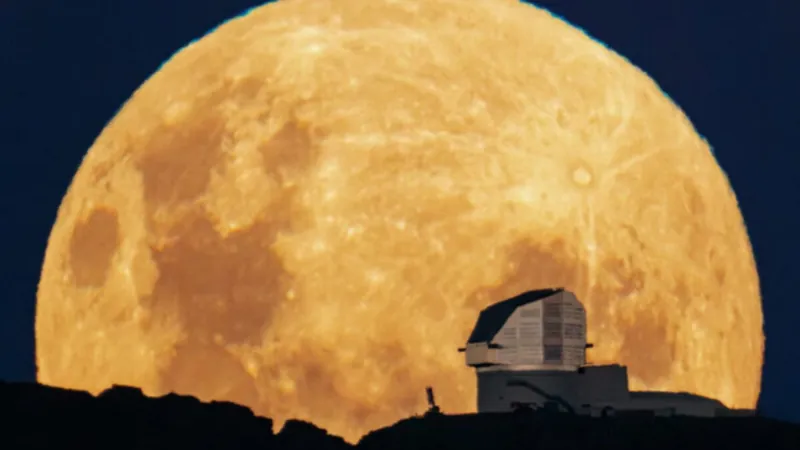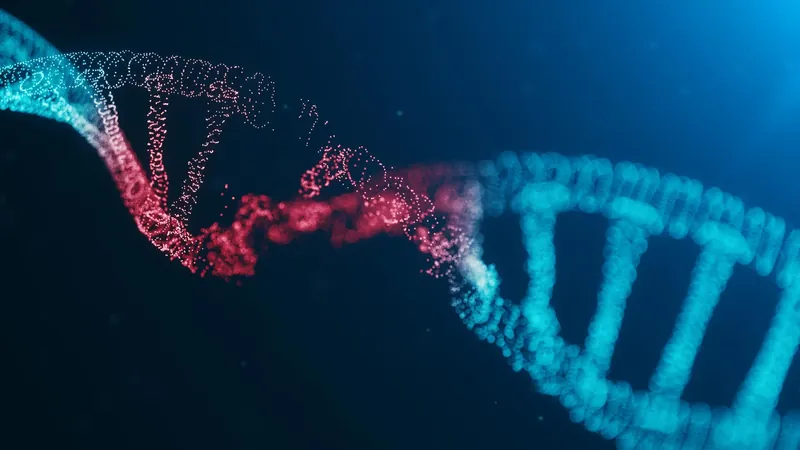
New Telescope Set to Unveil Millions of Solar System Secrets!
2025-06-05
Author: Ming
A revolutionary telescope high in the breathtaking Chilean Andes is about to transform our understanding of the solar system—think of it as upgrading from a black-and-white TV to immersive 4K ultra HD!
The Vera C. Rubin Observatory, a thrilling initiative from the National Science Foundation and the Department of Energy, will launch its operations later this year. This cutting-edge facility is equipped with the largest digital camera ever used in astronomy, poised to discover an unprecedented number of hidden objects.
Scientists predict that this powerful observatory will uncover millions of unidentified asteroids, comets, and remnants from the solar system's formation, many of which orbit perilously close to Earth.
Leading the charge is Meg Schwamb from Queen’s University Belfast, who has created an innovative open-source software named Sorcha. This tool will forecast the astonishing discoveries waiting for us at the Rubin Observatory, with insights detailed in recent papers uploaded to arXiv.
According to the team's bold estimates, the Rubin Observatory is expected to triple our catalog of near-Earth objects (NEOs)—from around 38,000 to a staggering 127,000. It will also detect an astounding tenfold increase in trans-Neptunian objects and provide vibrant, detailed imagery of more than 5 million main-belt asteroids, vastly up from the current 1.4 million.
Mario Juric, an astronomer from the University of Washington and a member of the research team, emphasized the importance of this data, stating, "With these insights, we can rewrite the textbooks on solar system formation and significantly enhance our capabilities to detect—and possibly divert—asteroids that could threaten Earth."
Sorcha uses advanced modeling to simulate the solar system's structure and predicts what the Rubin Observatory will observe based on its ambitious plans. As the first comprehensive simulator for the observatory, it provides insights from simulated light emissions to potential scientific findings.
The secret behind the Rubin Observatory's power lies within its jaw-dropping 3.2-gigapixel LSST camera. This technological marvel can scan an area of night sky about 45 times larger than the full Moon each night. In less than a week, it can map the entire night sky, resulting in a cosmic archive of 20 terabytes of data collected every night over the next decade.
With data flowing from the Rubin Observatory, scientists are set to uncover how our solar system formed and changed over time. The projected findings are monumental: 127,000 NEOs, 109,000 Jupiter Trojans, 37,000 distant Kuiper Belt objects, and more—each rendered in stunning color and movement, revealing spin rates, surface types, and other vital characteristics. This treasure trove of information will guide space agencies and researchers to their next groundbreaking targets!




 Brasil (PT)
Brasil (PT)
 Canada (EN)
Canada (EN)
 Chile (ES)
Chile (ES)
 Česko (CS)
Česko (CS)
 대한민국 (KO)
대한민국 (KO)
 España (ES)
España (ES)
 France (FR)
France (FR)
 Hong Kong (EN)
Hong Kong (EN)
 Italia (IT)
Italia (IT)
 日本 (JA)
日本 (JA)
 Magyarország (HU)
Magyarország (HU)
 Norge (NO)
Norge (NO)
 Polska (PL)
Polska (PL)
 Schweiz (DE)
Schweiz (DE)
 Singapore (EN)
Singapore (EN)
 Sverige (SV)
Sverige (SV)
 Suomi (FI)
Suomi (FI)
 Türkiye (TR)
Türkiye (TR)
 الإمارات العربية المتحدة (AR)
الإمارات العربية المتحدة (AR)